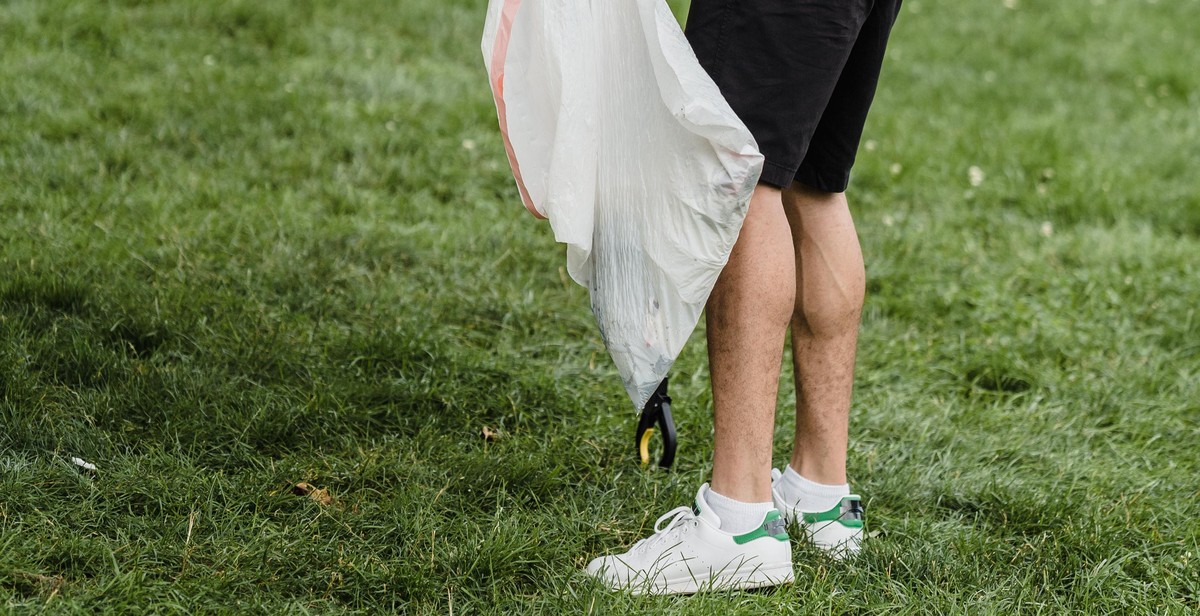Introduction
Maintaining a beautiful and healthy lawn requires more than just regular watering and mowing. It involves a year-round commitment to proper care and attention. A well-maintained lawn not only enhances the aesthetic appeal of your home but also provides a safe and enjoyable space for outdoor activities.
However, many homeowners struggle to keep their lawns healthy and lush throughout the year. Factors such as weather, soil quality, and pests can all affect the health of your lawn. But with the right knowledge and tools, you can ensure that your lawn stays healthy and vibrant all year long.
The Importance of Lawn Care
Regular lawn maintenance not only keeps your yard looking beautiful but also provides numerous benefits. A well-cared-for lawn can help prevent soil erosion, filter pollutants, and reduce noise and heat levels. It can also provide a safe and comfortable space for outdoor activities and improve the value of your property.
Year-Round Lawn Maintenance
Effective lawn maintenance requires a year-round commitment to proper care and attention. This includes regular watering, fertilizing, mowing, and weed control. It also involves taking steps to prevent and address common issues such as pests, diseases, and soil compaction.
By following the right lawn care practices, you can ensure that your lawn stays healthy and vibrant throughout the year. In the following sections, we will discuss some of the essential tips and techniques for maintaining and caring for your lawn in every season.

Spring Lawn Care
Spring is the time of year when your lawn begins to come back to life after the winter months. As the weather warms up, it’s important to take the necessary steps to ensure your lawn is healthy and thriving throughout the spring and summer. Here are some tips for spring lawn care:
Clean Up Your Lawn
The first step in spring lawn care is to clean up any debris that has accumulated over the winter months. This includes removing any dead leaves, branches, and other debris that may have fallen on your lawn. Raking your lawn will also help to promote healthy growth by removing any dead grass and allowing air and nutrients to reach the soil.
Mowing Your Lawn
Once your lawn is clean, it’s time to start mowing. It’s important to wait until your grass is at least 3 inches tall before mowing for the first time. This will allow your grass to establish strong roots and promote healthy growth. When mowing, be sure to only cut off the top third of the grass blades to avoid damaging the roots.
Fertilize Your Lawn
Fertilizing your lawn in the spring is essential for promoting healthy growth and preventing weeds. Look for a fertilizer that is high in nitrogen, as this will help to promote green, lush growth. Be sure to follow the instructions on the fertilizer package carefully, as over-fertilizing can damage your lawn.
Weed Control
Spring is also the time to start thinking about weed control. Weeds can quickly take over your lawn if left unchecked, so it’s important to take action early. Look for a weed control product that is safe for your grass type and follow the instructions carefully.
By following these tips for spring lawn care, you can ensure that your lawn is healthy and thriving throughout the spring and summer months.

Summer Lawn Care
Summer is the season when your lawn requires the most care. The hot and dry weather conditions can cause your grass to become stressed, which can lead to brown patches and other issues. Here are some tips to keep your lawn healthy and green throughout the summer months.
Watering Your Lawn
Watering your lawn is one of the most important tasks during the summer months. It’s essential to water your lawn deeply and infrequently to encourage deep root growth. Water your lawn early in the morning or late in the evening to minimize evaporation.
It’s important to avoid overwatering your lawn, as this can lead to shallow root growth and other issues. Use a rain gauge to determine how much water your lawn is receiving each week, and adjust your watering schedule accordingly.
Mowing Your Lawn
Mowing your lawn regularly is important during the summer months. However, it’s important to avoid cutting your grass too short, as this can cause it to become stressed and more susceptible to disease.
Set your mower blade to a height of 3-4 inches and only cut the top third of the grass blades. This will encourage deeper root growth and help your lawn retain moisture during the hot summer months.
Fertilizing Your Lawn
Fertilizing your lawn during the summer months can help promote healthy growth and improve its ability to withstand stress. Use a slow-release fertilizer to avoid burning your grass, and apply it according to the manufacturer’s instructions.
It’s important to avoid fertilizing your lawn during periods of drought, as this can cause your grass to become stressed and more susceptible to damage.
Weed Control
Weeds can quickly take over your lawn during the summer months, so it’s important to take steps to control them. Use a pre-emergent herbicide in the spring to prevent weed seeds from germinating.
If you do have weeds in your lawn, consider using a post-emergent herbicide to kill them. However, be careful to avoid spraying your grass, as this can also cause damage.
| Summer Lawn Care Tips |
|---|
| Water your lawn deeply and infrequently |
| Mow your lawn regularly, but avoid cutting it too short |
| Fertilize your lawn with a slow-release fertilizer |
| Use pre-emergent herbicide to prevent weeds from germinating |
| Use post-emergent herbicide to kill weeds |

Fall Lawn Care
As the leaves begin to fall, it’s important to prepare your lawn for the coming winter months. Here are some tips for fall lawn care:
Raking Leaves
While it may be tempting to let the leaves pile up on your lawn, it’s important to rake them up regularly. Leaves can block sunlight and trap moisture, which can lead to fungal diseases and dead patches in your lawn. Raking also helps to prevent the growth of mold and bacteria.
Mowing Your Lawn
Continue to mow your lawn throughout the fall, but adjust the height of your mower blade to allow for longer grass. Longer grass helps to insulate the soil and protect the roots from frost damage. It’s also important to keep your mower blade sharp to ensure a clean cut.
Fertilizing Your Lawn
Fall is the perfect time to fertilize your lawn. Use a fertilizer that is high in potassium and phosphorus to promote healthy root growth and winter hardiness. Be sure to follow the instructions on the package and avoid over-fertilizing, which can damage your lawn.
Weed Control
While weeds may not be as prevalent in the fall, it’s still important to keep them under control. Use a weed killer that is safe for your lawn and follow the instructions carefully. It’s also a good idea to manually remove any large weeds that you see.
| Fall Lawn Care Checklist |
|---|
| Rake leaves regularly |
| Mow your lawn at a higher height |
| Fertilize your lawn with a high potassium and phosphorus fertilizer |
| Control weeds with a safe weed killer |
By following these fall lawn care tips, you can help to ensure that your lawn stays healthy and beautiful throughout the winter months.

Winter Lawn Care
Winter can be a tough time for your lawn, but with the right care, you can keep it healthy and looking great all year round. Here are some tips for winter lawn care:
Removing Debris
Before the first snowfall, it’s important to remove any debris from your lawn, including leaves, branches, and other debris. If left on the lawn, debris can trap moisture and lead to disease and fungus growth. Rake up any debris and dispose of it properly.
Mowing Your Lawn
During the winter months, you may not need to mow your lawn as often as you do in the summer. However, it’s still important to keep your lawn at a healthy length. Aim to keep your lawn at around 2-3 inches in height throughout the winter. This will help to prevent disease and pest infestations.
Fertilizing Your Lawn
Fertilizing your lawn in the fall is crucial for winter lawn care. A fall fertilizer application will help your lawn to build strong roots and store nutrients for the winter months. Look for a fertilizer with a high phosphorus content, which will encourage root growth. Avoid fertilizing your lawn in the winter, as this can actually do more harm than good.
| Winter Lawn Care Tips: |
|---|
| Remove debris from your lawn before the first snowfall |
| Mow your lawn to a healthy length of 2-3 inches |
| Fertilize your lawn in the fall with a high phosphorus fertilizer |

Conclusion
Having a well-maintained lawn is not only aesthetically pleasing but also adds value to your property. With the right care and maintenance, you can keep your lawn looking lush and healthy all year round.
The key to maintaining a beautiful lawn is to follow a regular maintenance routine that includes watering, fertilizing, mowing, and aerating. Additionally, you should be on the lookout for pests and diseases that can damage your lawn and take immediate action to prevent them from spreading.
Remember to adjust your lawn care routine according to the changing seasons. During the summer months, you may need to water more frequently, while in the winter, you may need to adjust your mowing height and frequency.
Finally, don’t forget to keep your lawn clean and free of debris. Regularly removing leaves, branches, and other debris will not only improve the appearance of your lawn but also prevent pests and disease from taking hold.
By following these tips and staying on top of your lawn care routine, you can enjoy a beautiful, healthy lawn throughout the year.
Key Takeaways
- Regular maintenance is key to maintaining a healthy lawn
- Adjust your lawn care routine according to the changing seasons
- Keep your lawn clean and free of debris to prevent pests and diseases
Additional Resources
For more information on lawn care and maintenance, check out the following resources:
| Resource | Description |
|---|---|
| The Spruce | A comprehensive guide to lawn care and maintenance |
| Better Homes & Gardens | Tips and advice for maintaining a healthy lawn |
| Scotts | Basic information on lawn care and maintenance |
